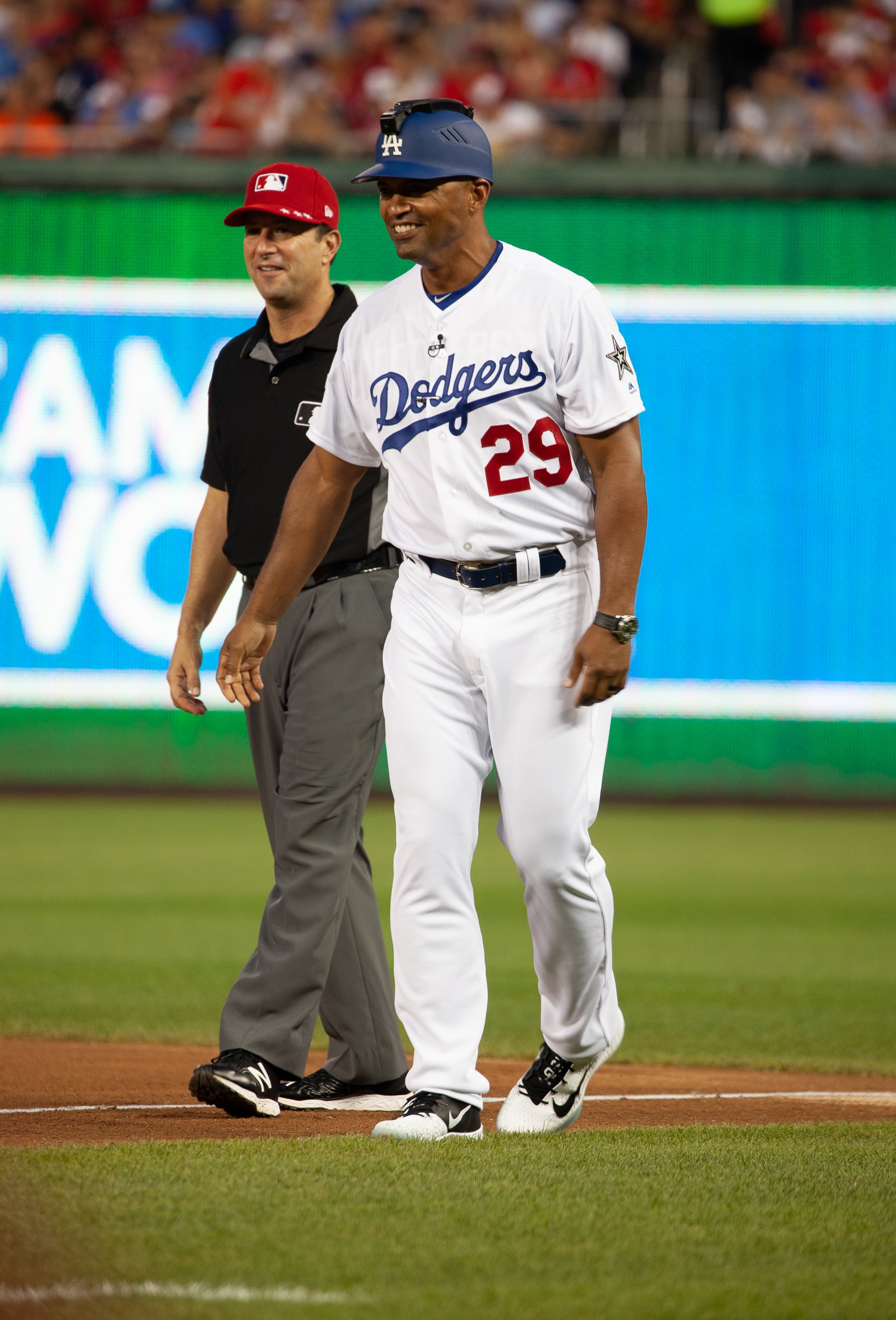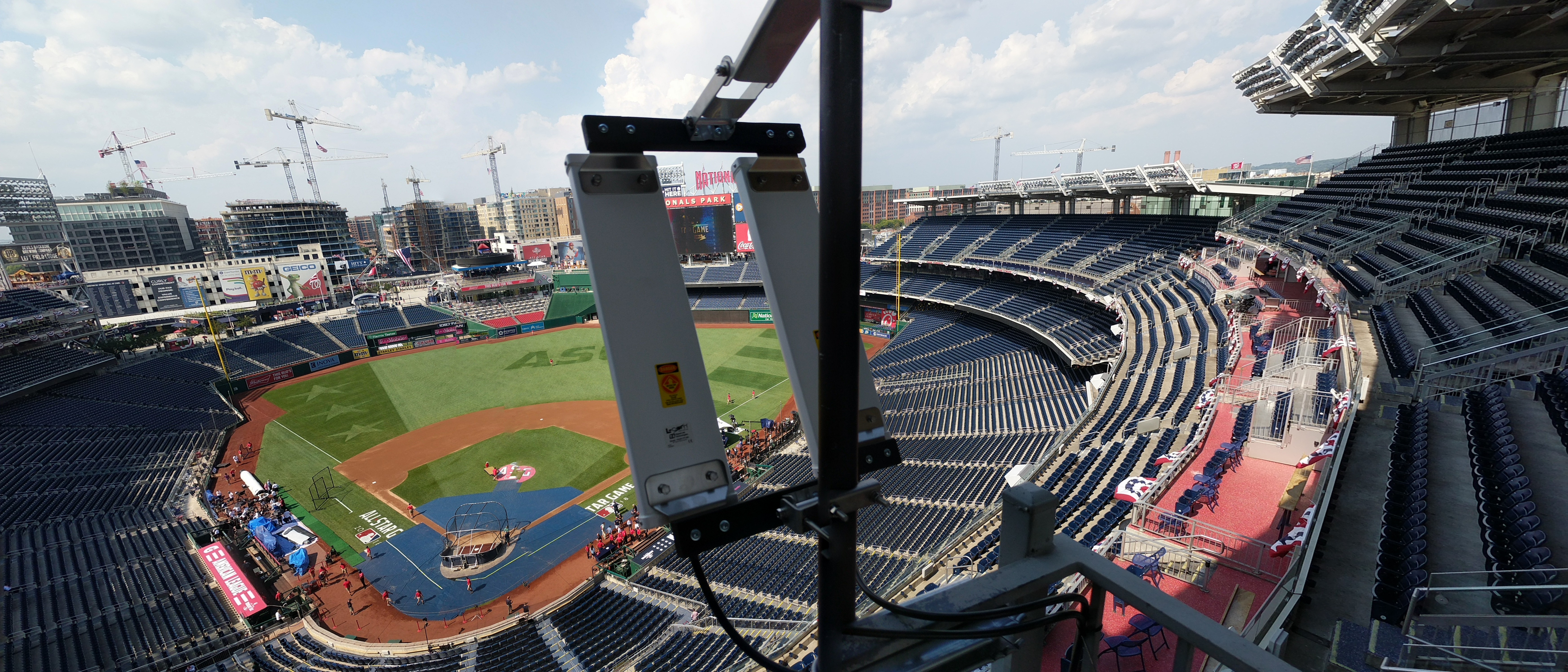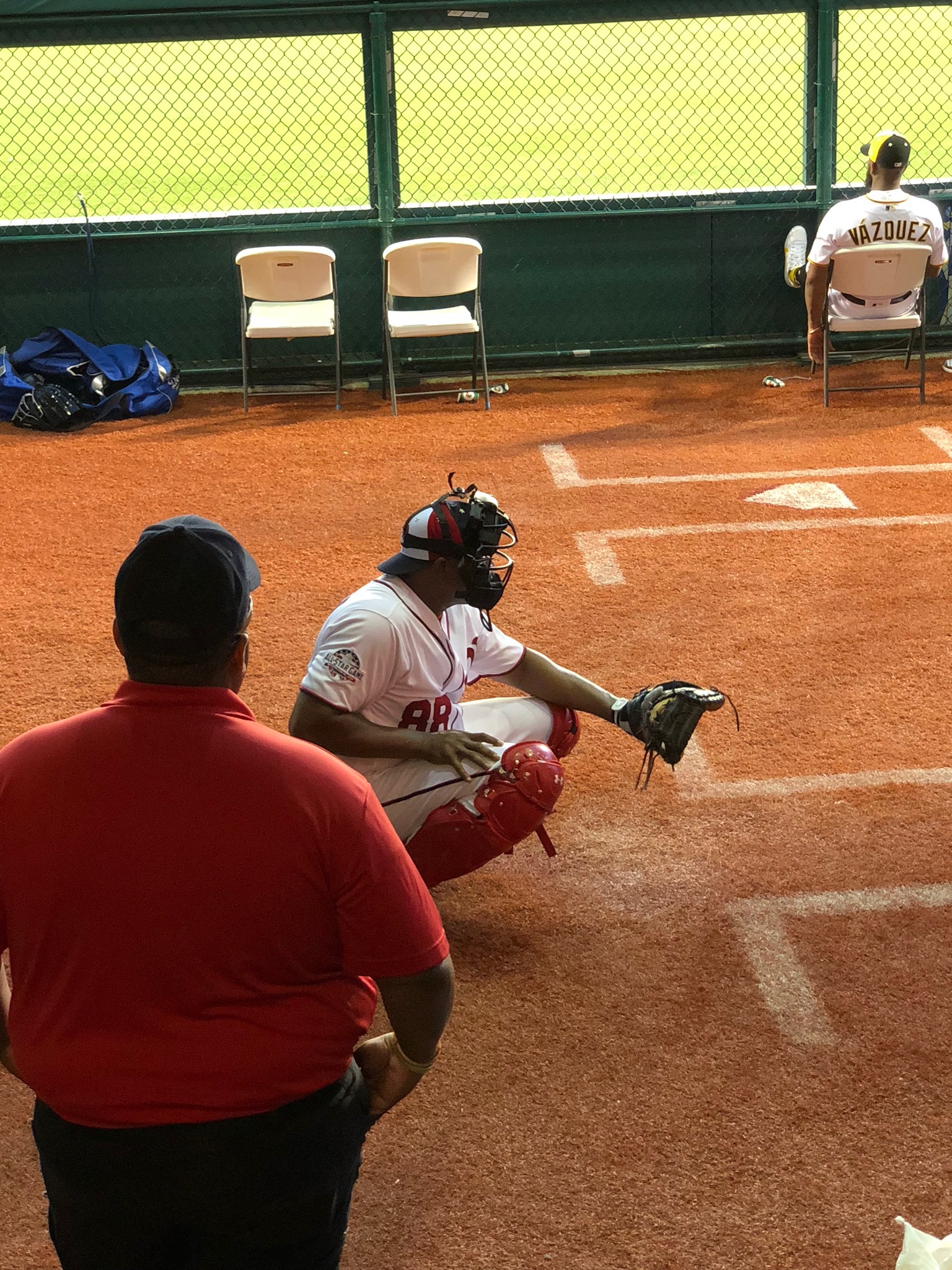ActionStreamer POV Cameras Bring New Look To All-Star Game
WESTMORE, VT.—Millions of Major League Baseball fans who vicariously live through their favorite players for at least a few moments each game had the chance to rachet up that experience during Fox Sports’ presentation of the MLB All-Star Game last month.

For the rest of us, who simply want a fresh, new perspective on the game, the broadcaster delivered as well with the help of a new POV camera system from ActionStreamer.
“Our company’s founder, [former NFL middle linebacker] Dhani Jones, saw that something was missing from sports coverage,” says Max Eisenberg, CEO and one of ActionStreamer’s three founders. “He had a big passion towards the end of his playing career for giving fans the first-person perspective he was having on the field.”
'NICE SOLID SHOTS'
For the MLB All-Star Game that meant outfitting several players and coaches with extremely lightweight (100 grams) POV hat and helmet camera/transmitting units to give fans a viewpoint on the game from behind the plate in the bullpen, from the first base coach’s box, inside the dugout and even of an entrance of Twins pitcher Jose Berrios from the bullpen to the mound. “That was the first-ever live in-game player perspective integrated into a telecast,” says Eisenberg.
Brad Cheney, vice president field operations at Fox Sports was particularly impressed with the HatCams worn by the first base coaches for both leagues.
“The HatCams showed us a lot of closeup action at first,” says Cheney. Taking wider shots than what Fox typically shoots, the HatCams captured whole plays developing as well as the first base coach walking up to a player and grabbing gear. “It gave us the opportunity for some nice solid shots,” he says.
Get the TV Tech Newsletter
The professional video industry's #1 source for news, trends and product and tech information. Sign up below.

Those following the game on Twitter weren’t left out of the POV action as Major League Baseball Tweeted out video highlights captured by the wearable ActionStreamer systems.
THE TECHNOLOGY
ActionStreamer systems consist of three major components:
- wireless camera streaming system worn by players and coaches
- proprietary software and networking technology
- patented image stabilization algorithm
The wearable system consists of a camera sensor, lens, battery, digital gyroscope, computer processor and radio, he explains. “Some of this is custom; some is off-the-shelf,” says Eisenberg. “The real value we provide is the software and networking.”
The company has six patents on its approach to making efficient use of bandwidth, which taken together, enable 10 or more camera-transmitter units to operate at once, says Eisenberg.
ActionStreamer radios operate in the 3.5GHz and 5GHz band –typically less congested spectrum, he says. The amount of available spectrum is treated as a networkwide resource and allocated to each ActionStreamer unit, he says.
Every unit typically operates within its own set of assigned parameters. However, if a unit experiences bandwidth challenges, parameters such as bit rate, bit depth and frame rate can be adjusted automatically to overcome the problem.
If doing so fails to allow the camera to transmit its shot, additional bandwidth can be dedicated to the unit, shifting some of the bandwidth allocated to other cameras on the network till the feed is streamed successfully, says Eisenberg.
“It’s a very managed approach. We are able to make the most efficient use of air time and bandwidth to bring more perspectives to life,” he explains.
Another important piece of ActionStreamer intellectual property relates to image stabilization. “Using a digital gyroscope, we pull the angular velocities with each frame of video,” says Eisenberg. “That helps our system to know how much head movement there is in the shot.”
The company is at work developing a system to leverage this data to apply in real time the right amount of offset to make shots steadier and more enjoyable to watch, he adds.
SETTING UP
At the moment, ActionStreamer arrives at the game venue a day or so before the telecast to survey the stadium or arena, identify fiber drops where its receive antennas can be located so shots transmitted by its cameras can be relayed to the production compound and set up its equipment rack.
For the All-Star Game, three receive antennas were deployed: one at about the 300 level above home plate; one in the first-base-side dugout; and one in the National League bullpen, Eisenberg said.

Eventually, the company intends to do stadium installs and season installs, giving its crew more time to do testing and tuning, he adds.
Fox Sports has been looking for a technology to provide POV shots for at least the past four years, says Cheney.
The stars aligned for the broadcaster to be able to deploy the ActionStreamer system as part of its All-Star Game coverage. First, ActionStreamer isn’t “modifying actual pieces of equipment as much as it is adaption to equipment that exists,” says Cheney. That’s especially important to players, who don’t want to be hindered by some foreign apparatus, and to the league, which wants to maintain the safety and well-being of players.

Second, ActionStreamer began testing its equipment with the MLB Network and the league itself earlier in the season so both operations were quite familiar with the technology, says Cheney.
Finally, the All-Star Game is an exhibition game, not an official contest that, for example, determines home field advantage in the World Series as it has in the past, making the decision to deploy ActionStreamer easier, he says.
Cheney envisions using ActionStreamer POV shots in the Fox Sports post-season Major League Baseball coverage. “And with our regional networks, usually what we do here turns into what they do at the beginning of next season for a full season,” he says.
As for ActionStreamer, the company is looking to deploy its technology to cover other sports. “We have a deal with the Arena Football League,” says Eisenberg. “About a month ago in the AFL, we brought a livestreaming football helmet into a live game for the first time ever.
“We are now looking at a variety of other sports that can benefit from our technology.”
More information is available on the ActionStreamer website.
Phil Kurz is a contributing editor to TV Tech. He has written about TV and video technology for more than 30 years and served as editor of three leading industry magazines. He earned a Bachelor of Journalism and a Master’s Degree in Journalism from the University of Missouri-Columbia School of Journalism.

